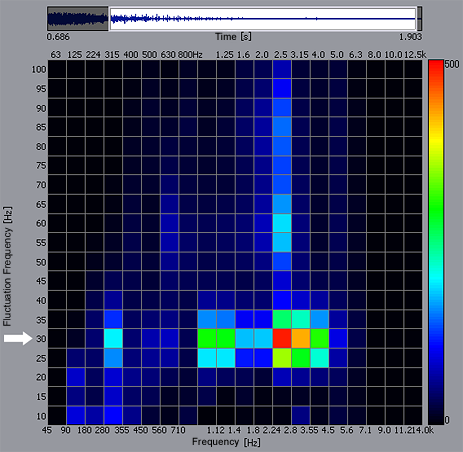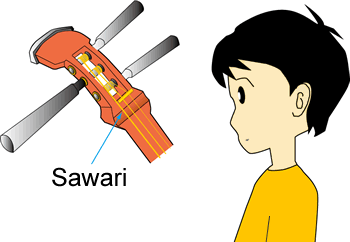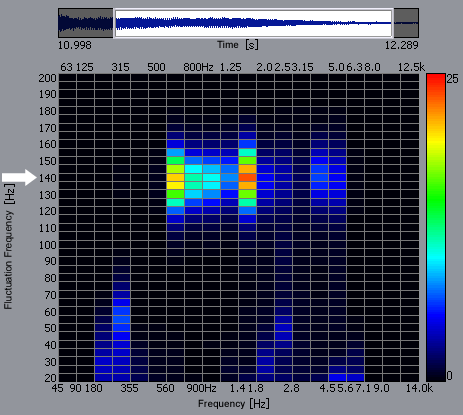- HOME
- Ono Sokki's Patio
- Fluctuation Sound

Fluctuation Sound
Ken: After learning about the Nakiryu, I tried all over school to see if there was a place that made the same sound as the Nakiryu. It wasn’t like the Nakiryu at Nikkou, but there were couple places with parallel walls where the reflecting noise was similar when I clapped my hands.
Dad: Besides the space such as the wall and ceiling, if another condition has to be given for a clear sound, it would be if the place is quiet or not. Nakiryu is a phenomenon of long and continuous reflection of sound at a constant interval. So if it is a place without other noises, you will be able to hear it while it attenuates and until it disappears
Ken: I see. I may be able to discover more locations where I can hear the Nakiryu early in the morning rather than in the afternoon. By the way, at some places I found, the roughness of the reflecting noise seemed different.
Dad: Previously you heard samples of sound beginning to fluctuate more and becoming rougher by varying the number of time the continuous sound changes in a second (modulation frequency).
Ken: I see. Because the period of reflection sound is different depending on location, it sounds different, doesn't it?
Dad: Exactly. Don’t you think it would be great if we can convert what you hear into data?
Ken: Do you mean like in decibels as you taught me before?
Dad: Decibels? Decibel is a displayed level that was compared to a set standard. You can display aspect like volume with number, but converting what you hear into number is very difficult. But if it’s limited to intensity, for example sound fluctuation or the sense of roughness you have been hearing, then there is a way to convert these sounds to numbers.
Ken: That seems interesting. Can you give me more details?
Dad: Actually, I analyzed the sound of the Nakiryu from the other day.
 Take a look at this graph. (Roll over here with cursor for picture) I’ll avoid the details, but in this graph, the
horizontal axis is the height of the sound (frequency)
and vertical axis is the modulation frequency. The size
of the movement is described in colors. If you take a
look at the modulation frequency, the result is
displaying 30 Hz having the highest modulation. In an
article in 1965 which studied the Nakiryu before the
burn down, it stated "29 reflection sounds in 1 second".
So this analysis definitely proves that.
Take a look at this graph. (Roll over here with cursor for picture) I’ll avoid the details, but in this graph, the
horizontal axis is the height of the sound (frequency)
and vertical axis is the modulation frequency. The size
of the movement is described in colors. If you take a
look at the modulation frequency, the result is
displaying 30 Hz having the highest modulation. In an
article in 1965 which studied the Nakiryu before the
burn down, it stated "29 reflection sounds in 1 second".
So this analysis definitely proves that.
Ken: I did not know besides levels and frequency of sound, you can analyze it like this.
Dad: Yes. I was also intrigued in this analysis and I tried other sounds as well. An interesting example, which you may not know, is the "sawari" of a shamisen.
Ken: "Sawari"? I do not know much about
shamisen, but what is a "sawari"
Dad: Shamisen has three strings. Of the three, only the lowest string (string one) is strung without passing over the "Kamigoma", something like a nut on a guitar. Because of this design, the string slightly contacts the neck portion of a shamisen called "sawari" when played, and makes a characteristic sound which is imperative for a shamisen.
Ken: I got it! Did you analyze that sound?
Dad: Yes.
 This graph (Roll over with cursor here for picture) is the result. You can tell the fluctuation component is
great around 140Hz of modulation frequency.
This graph (Roll over with cursor here for picture) is the result. You can tell the fluctuation component is
great around 140Hz of modulation frequency.
Again, (click here for flash picture) this graph is expressed in waves and clearly there are 14 pulses in 0.1 second. I have the file of this sound so try listening to it.
(Click here for sound.)
Ken: It's a bit dirty.
Dad: Try listing to this other sound.
Ken: It seems artificial, but it is very similar to the "sawari" sound.
Dad: This sound is the previously heard continuous 1 kHz sound with the modulation frequency of 150 Hz. (Closest to the modulation frequency of "sawari" within "Continuous sound sample" (Flash) in "Nakiryu")
Ken: Oh, is that so?
Dad: The sound of shamisen being greater within the 1 KHz-band may be one of the reason, but having closer modulation frequency is another reason which makes us feel the dirtiness and roughness of these sounds similar.
Ken: What other situations can you use this analysis method?
Dad: Let’s see. You can use it to grade machine noise. Normally, a machine rotates or reciprocates at a constant speed, creating a time-varying sound. For example, if the interior panel of a car vibrates, many can complain about the abnormal noise. There have been examples of use to abstract these abnormal noises.
Ken: Makes you want to try various noises from motors, air conditioners, or of that sort.
Dad: Yes. Hopefully it will be useful to make such noises more pleasant.
- © ONO SOKKI CO., LTD. 1996-2025

